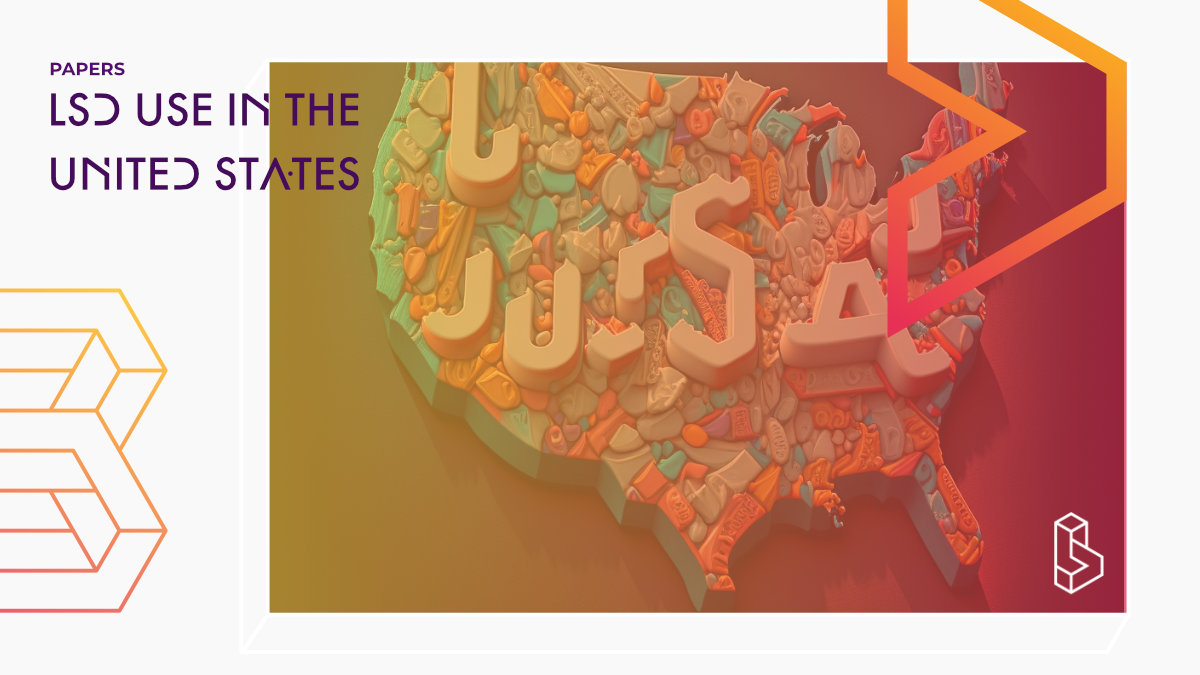This pre-print analysis of population survey data (2015-2019; 280.000 respondents) finds an increase in LSD use (from .06% to 0.9%, +47%). Those who self-reported Hallucinogen Persisting Perception Disorder (HPPD) didn’t increase their use. “LSD does not appear to contribute significantly to the country’s public health problems.“
Abstract
“Background: Lysergic acid (LSD) use has risen in the United States (US) in recent years amid increased interest in therapeutic applications of psychedelics. Despite this, contemporary epidemiological investigations of LSD users are few. To expand the literature on this topic, we sought to characterize past-year LSD users in the US and investigate recent demographic evolution within this population.
Methods: Using National Survey on Drug Use and Health (NSDUH) data from 2015-2019, we investigated correlates of past-year LSD use and associated changes over the study period.
Results: Past-year LSD use increased by 47% from 2015 to 2019 (0.59% to 0.87%). However, among people reporting past-year hallucinogen use disorder there was no significant proportional increase in LSD users. Notable correlates of LSD use on multivariable analysis were: increased LSD access, lower perceived risk of trying LSD, Asian race, low income, fewer children in the home, history of ever selling drugs, being approached by someone selling drugs in the past month, lack of influence of religious beliefs on decision-making, and past-year suicide attempt among people age 18 and older. We found no associations with unemployment, arrest history, past-year psychological distress, or sexually transmitted infections. From 2015 to 2019, the proportion of respondents reporting past-year LSD use who were pregnant, age 26-34, and married increased. Past-year LSD use among lifetime users of methamphetamine also rose.
Conclusions: Though still uncommonly used in the US, LSD’s societal acceptance may be increasing. Overall, LSD does not appear to contribute significantly to the country’s public health problems.“
Authors: Jeremy Weleff, Akhil Anand, Elizabeth N. Dewey & Brian S. Barnett
Summary of LSD use in the United States
In 2019, there were more than 27 million lifetime lysergic acid diethylamide (LSD) users in the United States, and past-year use remains on an upward trajectory. The factors behind this rise are not yet clear, though the resurgence of interest in therapeutic applications of psychedelics may be contributing factors. The authors sought to characterize past-year LSD users in the United States from 2015 to 2019 and evaluate whether user demography is evolving.
The Substance Abuse and Mental Health Services Administration conducts the U.S. National Survey on Drug Use and Health annually. It uses pooled data from survey years 2015 to 2019 on all respondents (age 12 and older). The primary outcome for this study was past-year LSD use. The primary outcome variable is reported, but unweighted frequencies for individual variables are not reported. Log-transformed linear regression was used to evaluate differences between LSD use groups.
Find this paper
LSD use in the United States: Examining user demographics and their evolution from 2015-2019
https://doi.org/10.1101/2022.12.23.22283883
Open Access | Google Scholar | Backup | 🕊
Study details
Compounds studied
LSD
Topics studied
Population Surveys
Study characteristics
Survey
Participants
282768
Humans

